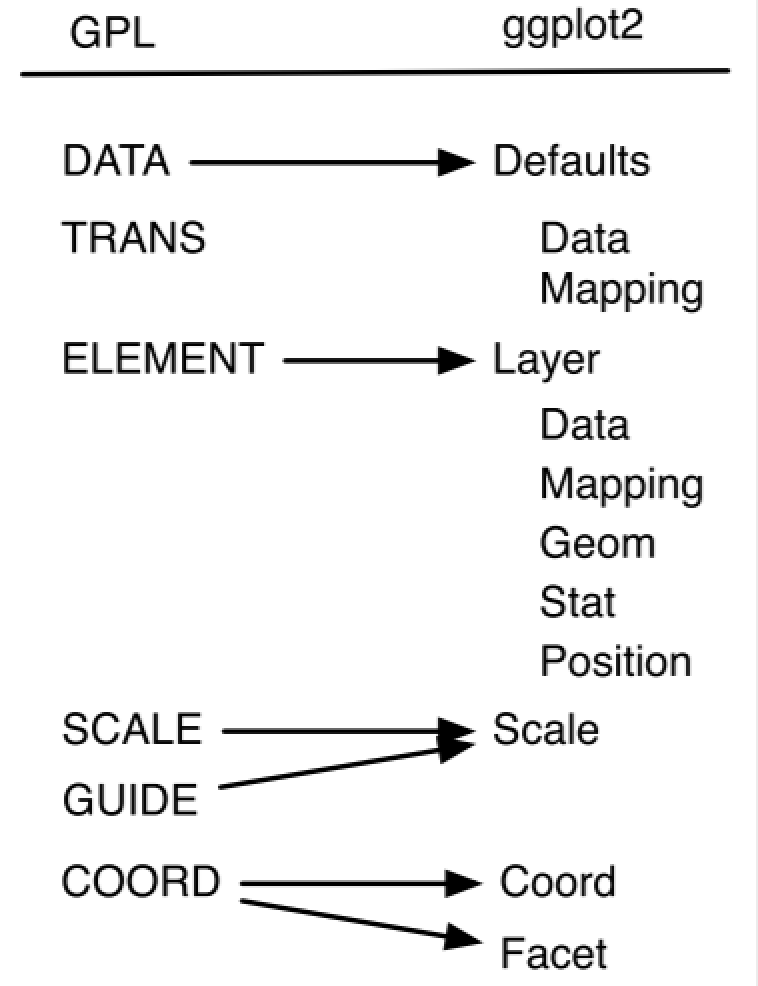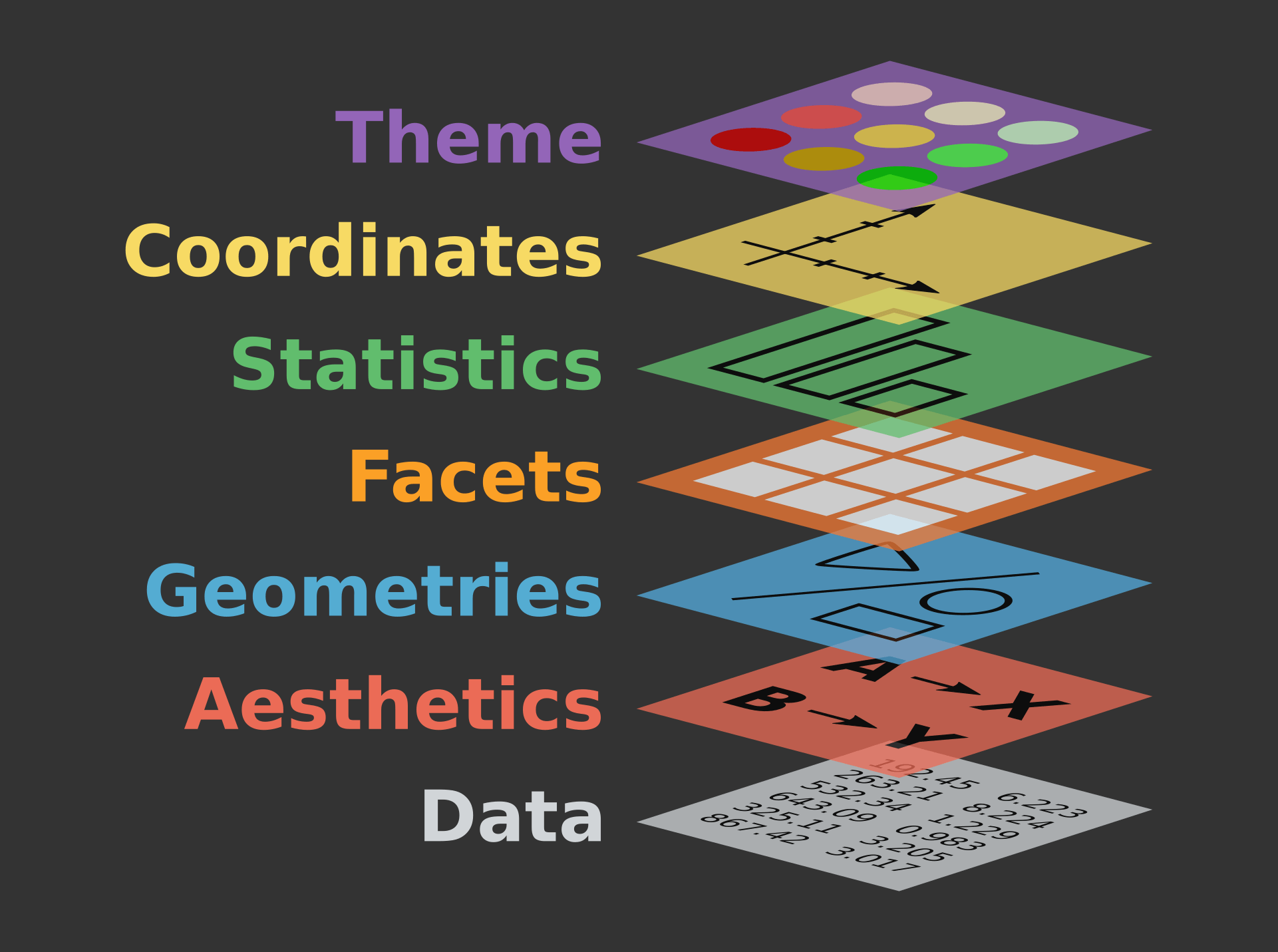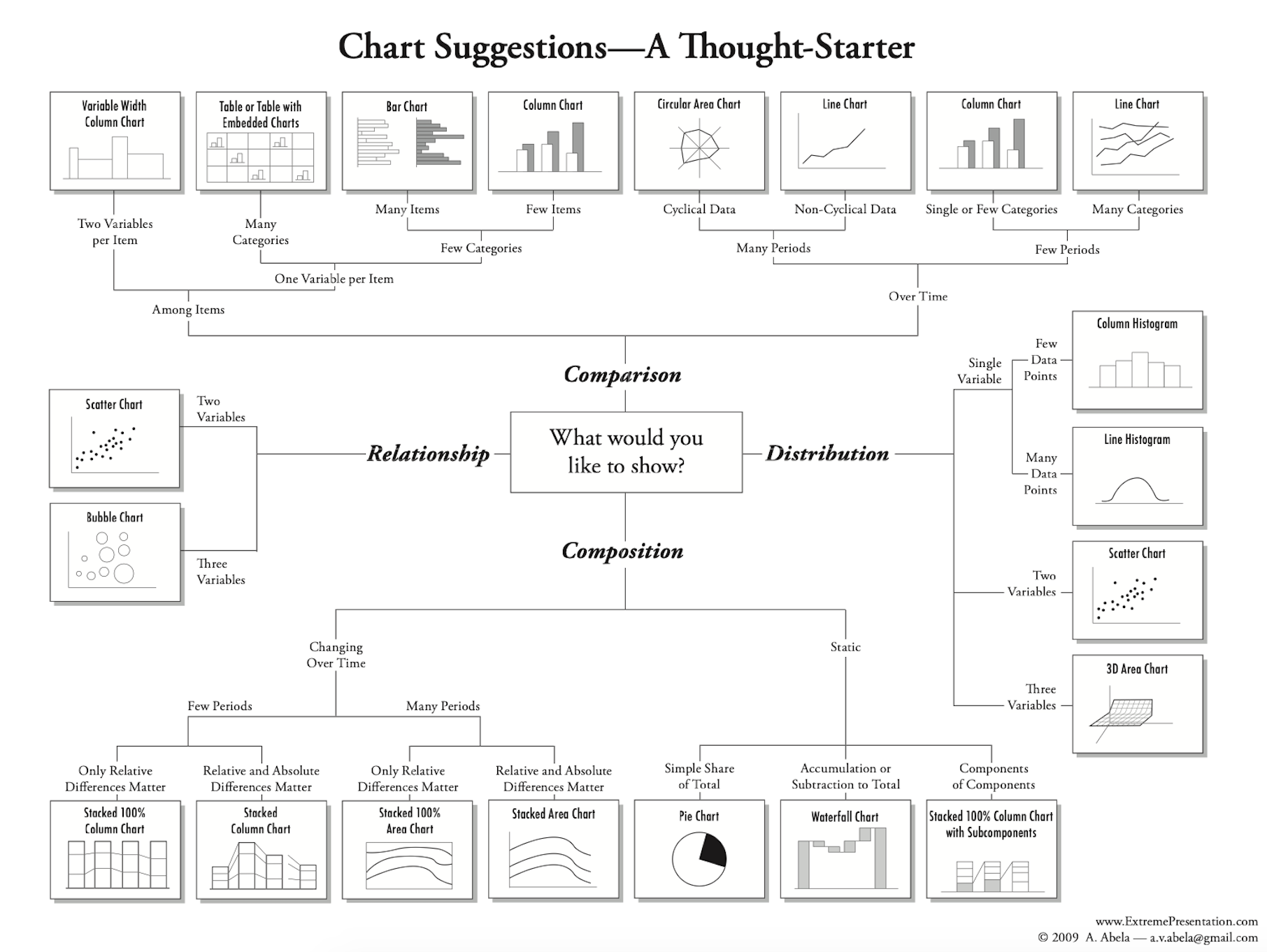Data Visualization
Lesser known intro
Amy Tzu-Yu Chen
2020-06-27
About Me
UCLA'16, Statistics
Data Scientist at System1 & Computational Linguistics MS Student at University of Washington
Happy R user since STAT 20
Find me at amy17519 @ Twitter, Github, and LinkedIn
Why is this a "lesser known" intro
You can easily find tutorials if you google "how to use "blah blah" visualization library"
(🤭 and just copy and paste code! It works!)
Why is this a "lesser known" intro
You can easily find tutorials if you google "how to use "blah blah" visualization library"
(🤭 and just copy and paste code! It works!)
You can even build amazing graphs without coding using Tableau etc
(🤭 and they look nice! Nicer than my ggplots sometimes!)
Why is this a "lesser known" intro
You can easily find tutorials if you google "how to use "blah blah" visualization library"
(🤭 and just copy and paste code! It works!)
You can even build amazing graphs without coding using Tableau etc
(🤭 and they look nice! Nicer than my ggplots sometimes!)
🤔... However, having a deeper understanding on visualization tools and process is a great asset for data practitioners
Why is this a "lesser known" intro
You can easily find tutorials if you google "how to use "blah blah" visualization library"
(🤭 and just copy and paste code! It works!)
You can even build amazing graphs without coding using Tableau etc
(🤭 and they look nice! Nicer than my ggplots sometimes!)
🤔... However, having a deeper understanding on visualization tools and process is a great asset for data practitioners
🤩 Know behind-the-library design philosophy ➡️ helps you understand a diverse range of graphics and powerful tools faster
Why is this a "lesser known" intro
You can easily find tutorials if you google "how to use "blah blah" visualization library"
(🤭 and just copy and paste code! It works!)
You can even build amazing graphs without coding using Tableau etc
(🤭 and they look nice! Nicer than my ggplots sometimes!)
🤔... However, having a deeper understanding on visualization tools and process is a great asset for data practitioners
🤩 Know behind-the-library design philosophy ➡️ helps you understand a diverse range of graphics and powerful tools faster
🤩 Practice visualization process ➡️ inform yourself, then educate your audience
Agenda
Grammar of Graphics
Strategy
Visualization Process
- Making Exploratory Graphs
- Making Confirmatory Graphs
Toolbox
Resources
Grammar of Graphics
The Beauty of Grammar of Graphics
In languages, grammar keeps things in order.
The Beauty of Grammar of Graphics
In languages, grammar keeps things in order.
If you know some grammar, you don't need to know all the vocabularies to speak.
The Beauty of Grammar of Graphics
In languages, grammar keeps things in order.
If you know some grammar, you don't need to know all the vocabularies to speak.
If you know some grammar of graphics, you don't need to know all coding syntax or graph types to make an informative graph
History - Grammar of Graphics
Late 1990s: the concept was introduced by Leland Wilkinson. See The Grammar of Graphics 2nd Edition, 2005.
2000s: Hadley Wickham built the R visualization library ggplot2 based on grammar of graphics with modifications. He also published A Layered Grammar of Graphics, 2010.
Many applications in visualization libraries/projects in different languages.

Grammar of Graphics - Components of Grammar

Example Data
# df_measles comes from dataset dslabs::us_contagious_diseasesstr(df_measles)## Classes 'data.table' and 'data.frame': 3825 obs. of 6 variables:## $ disease : Factor w/ 7 levels "Hepatitis A",..: 2 2 2 2 2 2 2 2 2 2 ...## $ state : Factor w/ 51 levels "Alabama","Alaska",..: 1 1 1 1 1 1 1 1 1 1 ...## $ year : num 1928 1929 1930 1931 1932 ...## $ weeks_reporting: num 52 49 52 49 41 51 52 49 40 49 ...## $ count : num 8843 2959 4156 8934 270 ...## $ population : num 2589923 2619131 2646248 2670818 2693027 ...## - attr(*, ".internal.selfref")=<externalptr>head(df_measles)## disease state year weeks_reporting count population## 1: Measles Alabama 1928 52 8843 2589923## 2: Measles Alabama 1929 49 2959 2619131## 3: Measles Alabama 1930 52 4156 2646248## 4: Measles Alabama 1931 49 8934 2670818## 5: Measles Alabama 1932 41 270 2693027## 6: Measles Alabama 1933 51 1735 2713243Grammar of Graphics
- Data
- Aesthestics
- Geometry
- Stats
- Facets
- Coordinate
- Theme
# Annual reported Measles cases in Californiaggplot(data = CA_Measles, aes(x = year, y = count)) + geom_line()
Grammar of Graphics
- Data
- Aesthestics
- Geometry
- Stats
- Facets
- Coordinate
- Theme
# Annual reported Measles cases in Californiaggplot(data = CA_Measles, aes(x = year, y = count)) + geom_line()
Grammar of Graphics
- Data
- Aesthestics
- Geometry
- Stats
- Facets
- Coordinate
- Theme
Data, Aesthestics(for input data), and Geometry are required to make a minimal graph
ggplot(aes(x = year, y = count)) + geom_line() ## Error: `data` must be a data frame.... 🤔ggplot(data = CA_Measles) + geom_line() ## Error in order(c(1L, 1L, 1L, 1L, 1L, 1L, 1L, 1L, 1L, 1L, 1L, 1L, 1L, 1L, : ## argument 3 is not a vectorggplot(data = CA_Measles, aes(x = year, y = count))# No error, but you will get an empty ggplot canvasGrammar of Graphics
- Data
- Aesthestics
- Geometry
- Stats
- Facets
- Coordinate
- Theme
Data, Aesthestics(for input data), and Geometry are required to make a minimal graph
ggplot(aes(x = year, y = count)) + geom_line() ## Error: `data` must be a data frame.... 🤔 ggplot(data = CA_Measles) + geom_line() ## Error in order(c(1L, 1L, 1L, 1L, 1L, 1L, 1L, 1L, 1L, 1L, 1L, 1L, 1L, 1L, : ## argument 3 is not a vectorggplot(data = CA_Measles, aes(x = year, y = count))# No error, but you will get an empty ggplot canvasGrammar of Graphics
- Data
- Aesthestics
- Geometry
- Stats
- Facets
- Coordinate
- Theme
Data, Aesthestics(for input data), and Geometry are required to make a minimal graph
ggplot(aes(x = year, y = count)) + geom_line() ## Error: `data` must be a data frame.... 🤔ggplot(data = CA_Measles) + geom_line() ## Error in order(c(1L, 1L, 1L, 1L, 1L, 1L, 1L, 1L, 1L, 1L, 1L, 1L, 1L, 1L, : ## argument 3 is not a vector ggplot(data = CA_Measles, aes(x = year, y = count)) # No error, but you will get an empty ggplot canvasDifferent Library, Similar Syntax, Same Basic Components
library(plotly)plot_ly(CA_Measles, x = ~year, y = ~count, type = 'scatter', mode = 'lines')library(highcharter)hchart(CA_Measles, 'line', hcaes(x = year, y = count)Strategy

Bottomline
Focus on showing data patterns using an appropriate
fancygraphInformativeness >> Clarity >> Aesthestics
Data visualization could be subjective, but
The greatest value of a picture is when it forces us to notice what we never expected to see -- John W. Tukey
-- as opposed to what we wanted to confirm.
Visualization Process
Making Exploratory Graphs
to be able to say that we looked one layer deeper, and found nothing, is a definite step forward -- though not as far as to be able to say that we looked deeper and found thus-and-suck -- John W. Tukey
Make LOTS of exploratory graphs, and only present those that can convince yourself and guide the audience through your data analysis
In this stage, we only care about informativeness! We will worry about Clarity and Aesthestics in next stage.
Making Exploratory Graphs - Measles
- Data
- Aesthestics
- Geometry
- Stats
- Facets
- Coordinate
- Theme
ggplot(data = CA_Measles, aes(x = year, y = count)) + geom_line()
Making Exploratory Graphs - Measles
- Data
- Aesthestics
- Geometry
- Stats
- Facets
- Coordinate
- Theme
ggplot(data = df_measles, aes(x = year, y = count)) + geom_line() + facet_wrap(~state)
Making Exploratory Graphs - Measles
- Data
- Aesthestics
- Geometry
- Stats
- Facets
- Coordinate
- Theme
df_avg_pop <- df_measles[, .(mean_pop = mean(population, na.rm = TRUE)), state]ggplot(data = df_avg_pop, aes(x = state, y = mean_pop)) + geom_col()
Making Exploratory Graphs - Measles
- Data
- Aesthestics
- Geometry
- Stats
- Facets
- Coordinate
- Theme
ca_wy_noweight <- ggplot(df_measles[state %in% c("California", "Wyoming")], aes(x = year, y = count)) + geom_line() + facet_wrap(~state)ca_wy_weighted <- ggplot(df_measles[state %in% c("California", "Wyoming")], aes(x = year, y = count / (population / 1000000))) + geom_line() + facet_wrap(~state)Making Exploratory Graphs - Measles
- Data
- Aesthestics
- Geometry
- Stats
- Facets
- Coordinate
- Theme
library(patchwork)ca_wy_noweight / ca_wy_weighted
Making Exploratory Graphs - Measles
- Data
- Aesthestics
- Geometry
- Stats
- Facets
- Coordinate
- Theme
ggplot(data = df_measles, aes(x = year, y = count / (population / 1000000))) + geom_line() + facet_wrap(~state)
Making Confirmatory Graphs
Few exploratory graphs need to become confirmatory graphs
Key findings or evidence in your data analysis that help draw conclusions or inform modeling decisions
Now we have the information we want to share, we can work on Clarity and Aesthestics
Making Confirmatory Graphs -- Measles
- Data
- Aesthestics
- Geometry
- Stats
- Facets
- Coordinate
- Theme
ggplot(data = df_avg_pop, aes(x = reorder(state, mean_pop), y = mean_pop)) + geom_col() + coord_flip() + ggtitle("Average US State Population, 1928-2002") + scale_y_continuous(labels = scales::comma) + xlab("Avg Population") + ylab("State") + theme_bw()
Making Confirmatory Graphs -- Measles
- Data
- Aesthestics
- Geometry
- Stats
- Facets
- Coordinate
- Theme
ggplot(data = df_measles, aes(x = year, y = count / (population / 1000000))) + geom_line() + facet_wrap(~state) + ggtitle("Measle Cases per Million People by State, 1928-2002") + scale_y_continuous(labels = scales::comma) + xlab("State") + ylab("Cases/1m Population") + theme_bw()
Toolbox
Visualization Toolbox
Lots of ggplot extensions
Color Palettes
- r-color-palettes
- Wes Anderson Palettes
- html color codes - if you really want to customize
Resources
Tutorials, Videos, Books, and Paper
Liz Sander - Telling stories with data using the grammar of graphics
Hadley Wickham - A Layered Grammar of Graphics
Thomas Lin Pedersen - ggplot2 Workshop (video, 4.5hr tutorials with latest dev updates)
John W. Tukey - Exploratory Data Analysis, Preface
Dipanjan (DJ) Sarkar - A Comprehensive Guide to the Grammar of Graphics for Effective Visualization of Multi-dimensional Data